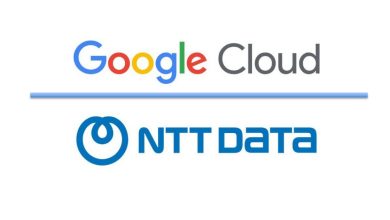
93% of companies are reportedly already shifting to a multi-cloud architecture and deployment, utilising several public and hybrid cloud providers, spurred by the numerous technology options, possible cost savings, and the need for business agility.
Unfortunately, however, large businesses face significant obstacles that, if not thoroughly examined, might undermine or even nullify the advantages of multi-cloud.
 According to Kyle Leciejewski, Senior Vice President of Global Specialty Sales at Dell Technologies despite these obstacles, multi-cloud solutions are widely being adopted by organisations. There has been a radical change in how businesses think about their IT infrastructure, with many now planning to use resources from several cloud vendors to improve their operations.
According to Kyle Leciejewski, Senior Vice President of Global Specialty Sales at Dell Technologies despite these obstacles, multi-cloud solutions are widely being adopted by organisations. There has been a radical change in how businesses think about their IT infrastructure, with many now planning to use resources from several cloud vendors to improve their operations.
Besides being able to take advantage of the strengths of each of the different cloud platforms, this approach enables organisations to avoid vendor lock-in and benefit from greater flexibility, cost optimisation, and resilience. In short, multi-cloud deployment is becoming increasingly popular as businesses look for ways to optimise their IT infrastructure.
With multi-cloud adoption clearly on the rise, businesses are prioritising cloud-native technologies like containers, microservices, and serverless computing to improve application development, deployment, and management. Efficient data management is critical, and companies are investing in solutions to manage data securely across multiple clouds and infrastructures. Security is also a top priority, and businesses are seeking solutions that provide visibility and control over security across their multi-cloud environment to protect sensitive data and avoid disruption.
Challenges of Migrating to the Cloud
Kyle mentioned that as a renowned technology company, Dell Technologies has noticed some frequent problems that businesses have when it comes to migrating to the cloud. These include:
- Legacy infrastructure: Many businesses have invested heavily in legacy infrastructure, which can make it challenging to migrate to the cloud. It may require significant effort and resources to modernise legacy applications and systems to be cloud-ready.
- Data security and compliance: Businesses need to ensure that their data is secure and compliant, whether it is stored on-premises or in the cloud. This requires a deep understanding of data regulations and compliance requirements and may involve implementing additional security measures to protect data in transit and at rest.
- Multi-cloud management: As businesses adopt multiple cloud platforms, they need to manage them effectively. This can be challenging, as different clouds have different architectures and management tools, and may require different skills and expertise to manage.
- Cost management: Cloud services can be expensive, and businesses need to manage costs effectively to ensure they are getting the most value for their investment. This requires a deep understanding of cloud pricing models and the ability to optimise cloud resources to minimise costs.
- Skills and expertise: Adopting cloud technology requires a range of new skills and expertise, including cloud architecture, security, and operations. Businesses may need to invest in training and development to ensure their staff has the necessary skills to manage cloud environments effectively.
As Cloud Takes Priority, Are Data Centres Here to Stay?
Cloud migration has had a significant impact on data centre requirements. According to Kyle, we are definitely seeing businesses shift workloads from their on-premises data centres to the cloud, particularly for non-critical applications and services. This trend is driven by the scalability, flexibility, and cost-effectiveness of cloud services, which can help businesses optimise their IT spending and improve agility.
However, as more businesses continue to adopt cloud technology, businesses are not abandoning any form of on-prem infrastructure en masse. Instead, their data centre needs have evolved to support hybrid cloud environments that combine public and private cloud resources. As such, Kyle believes that data centres are here to stay.
He explained that rather than phasing out their data centres entirely, many businesses are looking to modernise and optimise their data centres to support these hybrid cloud environments. This may involve implementing new technologies such as Hyper-Converged Infrastructure (HCI) or Software-Defined Data Centre (SDDC) solutions, which can help businesses improve agility, scalability, and performance.
In addition, businesses are increasingly looking to their data centres as strategic assets that can help drive business innovation and transformation. For example, data centres can serve as hubs for emerging technologies such as Artificial Intelligence (AI), the Internet of Things (IoT), and edge computing, which require robust computing resources and low-latency connectivity.
The APEX Predator in the Cloud World
Speaking of the data centre evolution, it seems like over the years, more and more vendors are working at providing a more “cloud-like” experience on-prem, or at least increasingly blurring the lines between on-prem and cloud environments to make it a more seamless experience overall.
Case in point: With more than USD $1 billion in annual recurring revenue in only the past 1 year, Dell APEX is a clear indicator of Dell Technologies’ success in the subscription-based IT services market. APEX’s numerous beneficial features make it a solid option for businesses looking for a flexible, extensible, and effective information technology platform.
Dell APEX’s flexibility to expand as needed is a major plus. Adaptable and expandable, APEX’s infrastructure can be tailored to every company’s unique requirements. Businesses that experience workload fluctuations or need to scale rapidly to respond to market shifts might benefit greatly from this kind of adaptability.

“One of Dell APEX’s best features is how adaptable it is. Businesses can take advantage of the service’s a la carte pricing structure and pay only for the information technology resources they really use. As a result, companies can save money by making better use of their IT budgets by avoiding wasteful practices like overprovisioning and underutilisation. Businesses that want to get the most out of their IT budgets will appreciate the savings they’ll see thanks to the flexibility of paying only for what they need,” said Kyle.
With Dell APEX, he said IT management can be significantly simplified. This service provides a “single pane of glass” for managing IT infrastructure, making it considerably easier for businesses to set up, monitor, and administer their IT resources from a centralised location. By streamlining and increasing the efficiency of an organisation’s IT infrastructure, IT staff can focus on other important initiatives as it has freed up resources.
Kyle went on to explain that Dell APEX can also help businesses that want to speed up the introduction of innovative products and services to customers. By providing quick and simple access to the necessary technology resources, the service can shorten the time it takes for businesses to bring innovative goods to market. Businesses will be better able to adjust to the ever-changing business environment.
To date, Dell APEX has been used in a wide range of use-cases, from general-purpose workloads to specialised applications and services. For example, businesses can use Dell APEX for High-Performance Computing (HPC), data analytics, and Artificial Intelligence (AI) applications. The service can also support containerised applications, Virtual Desktop Infrastructure (VDI), and disaster recovery solutions. Dell APEX is also here to provide solutions for small and medium-sized businesses, large enterprises, and public sector organisations.
“Overall, from our perspective, businesses are embracing multi-cloud strategies, and we are seeing significant trends in hybrid cloud adoption, multi-cloud management, cloud-native application development, data security and compliance, and AI and machine-learning optimisation. We are committed to helping our customers navigate this complex landscape and achieve their IT goals through our portfolio of multi-cloud solutions,” Kyle summarised as he vows to help each and every one of Dell’s customers to achieve the true form of the cloud.
Take this intelligent assessment to determine whether your business is benefitting from a modernised storage strategy. Answer these simple questions and immediately get a custom detailed whitepaper that will highlight key areas where you can improve your storage strategy, emailed directly to you.





